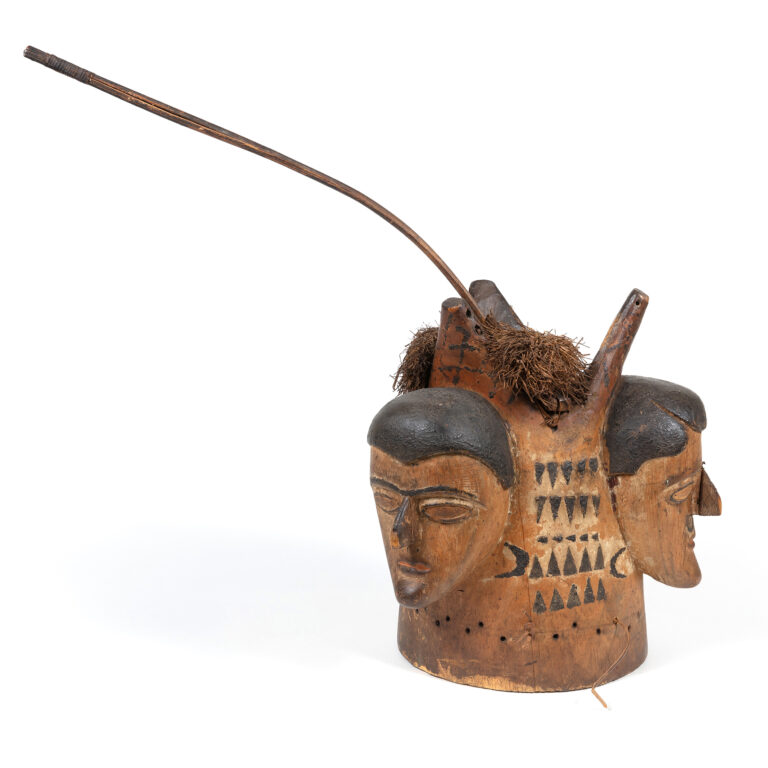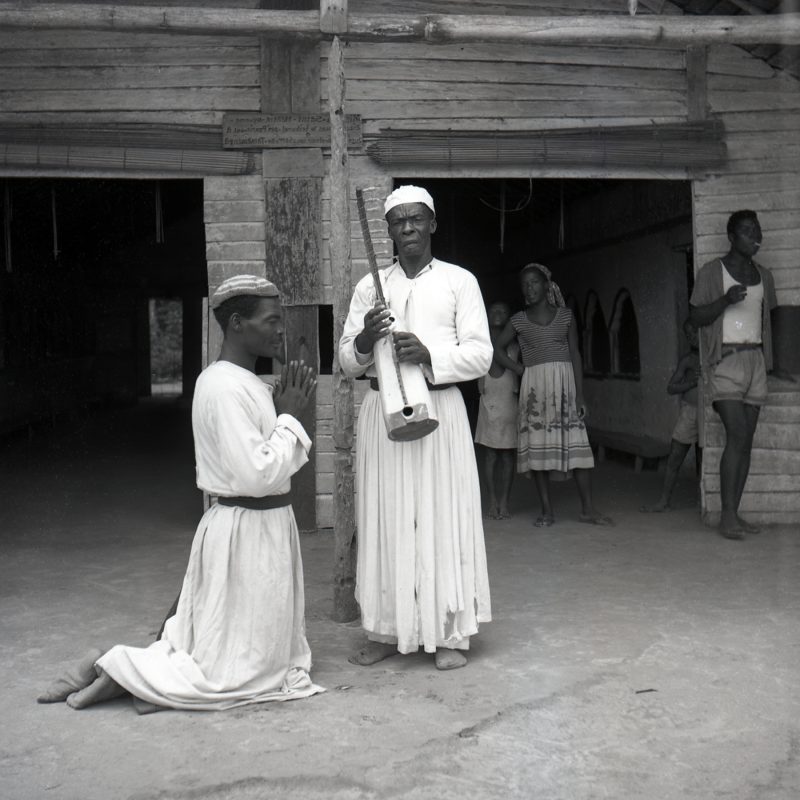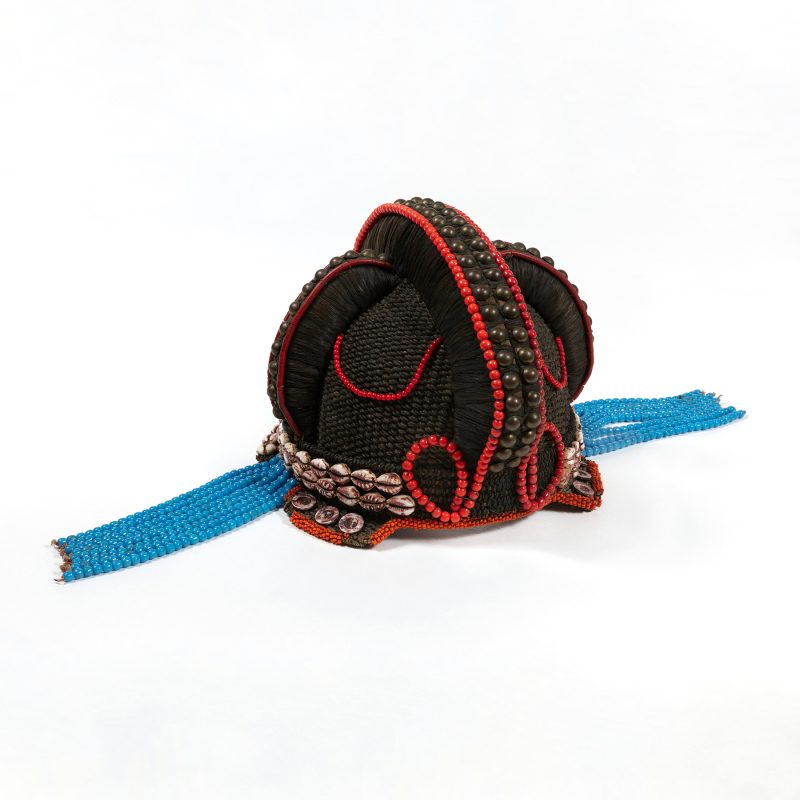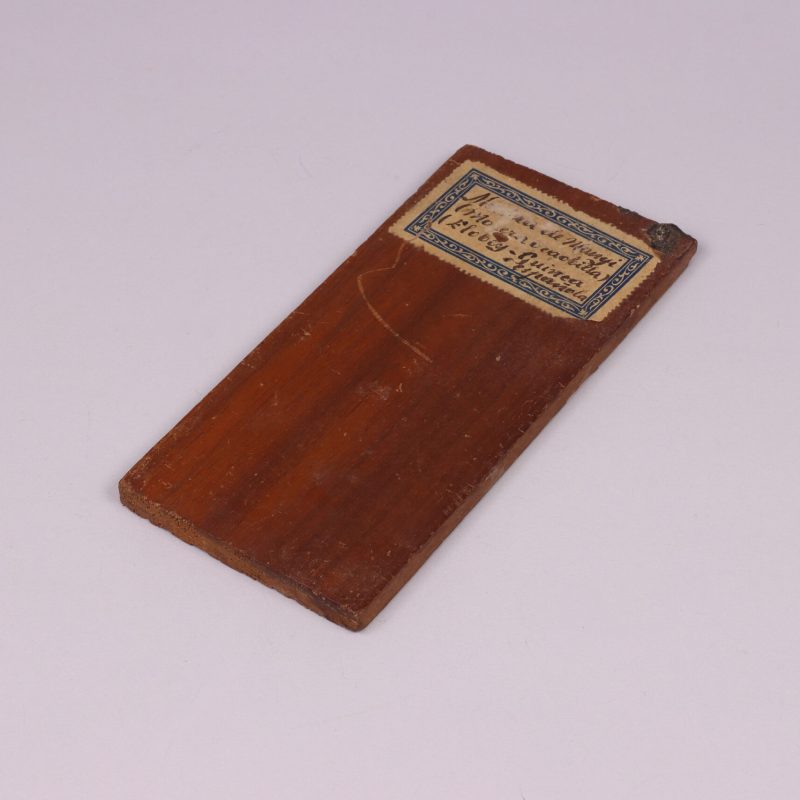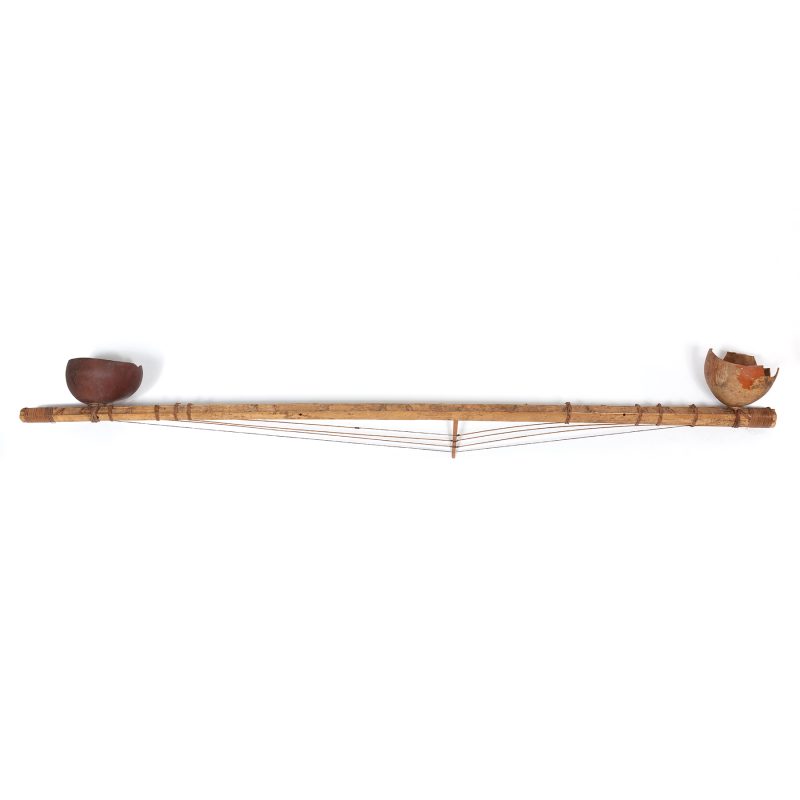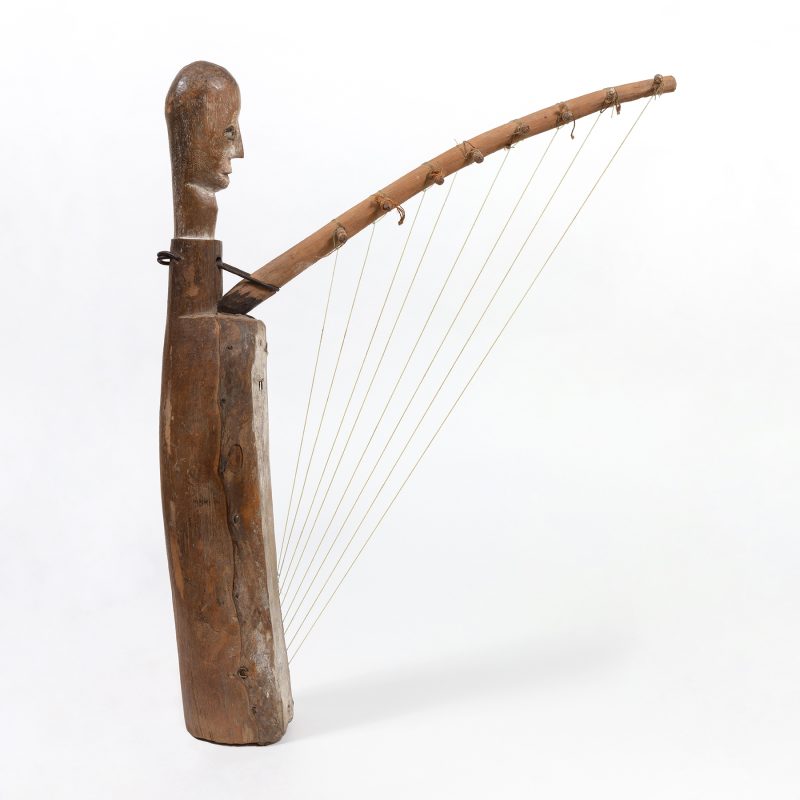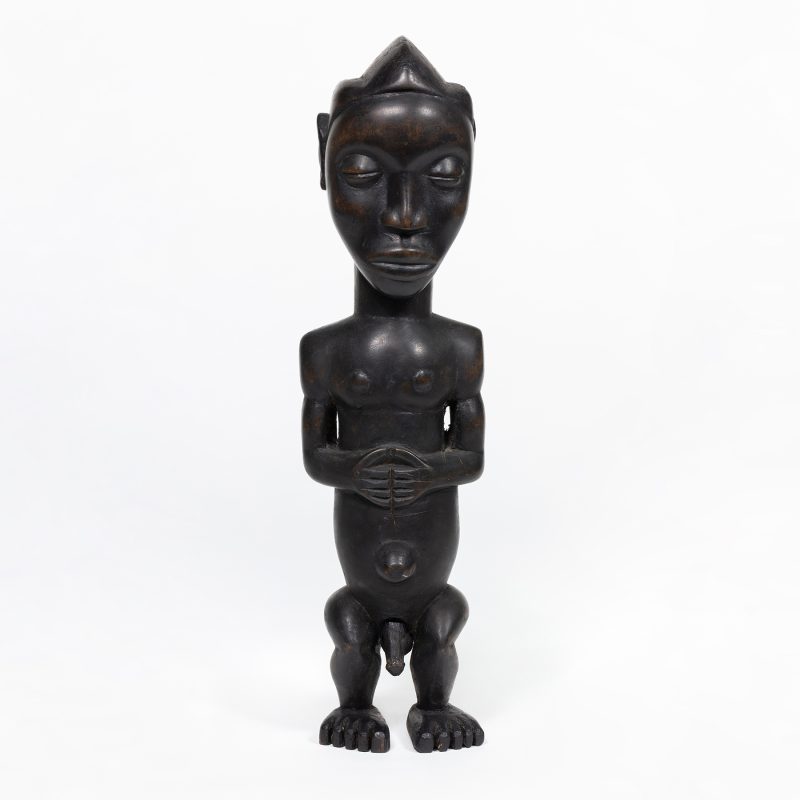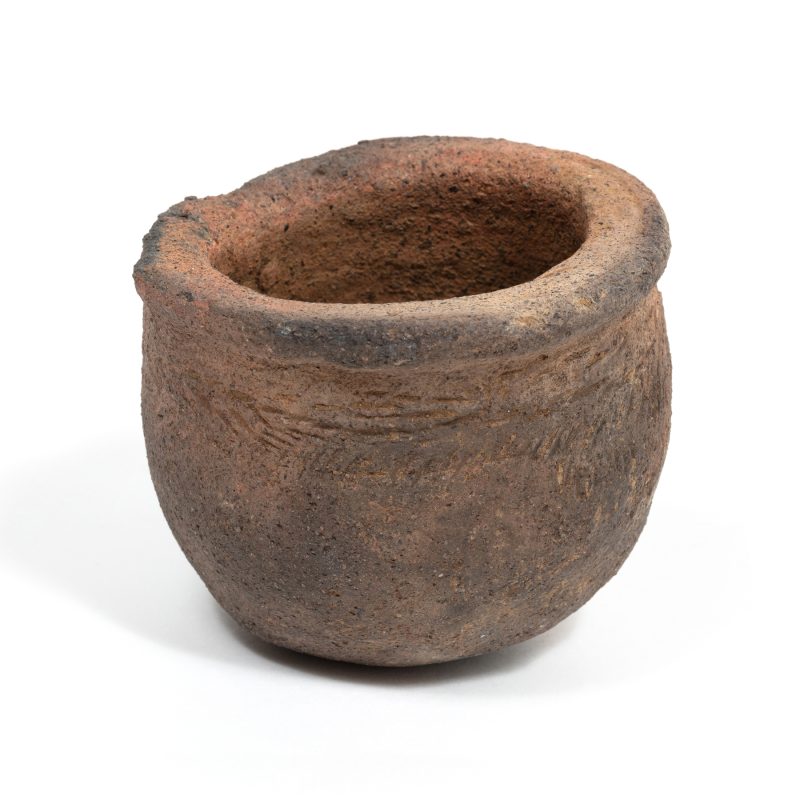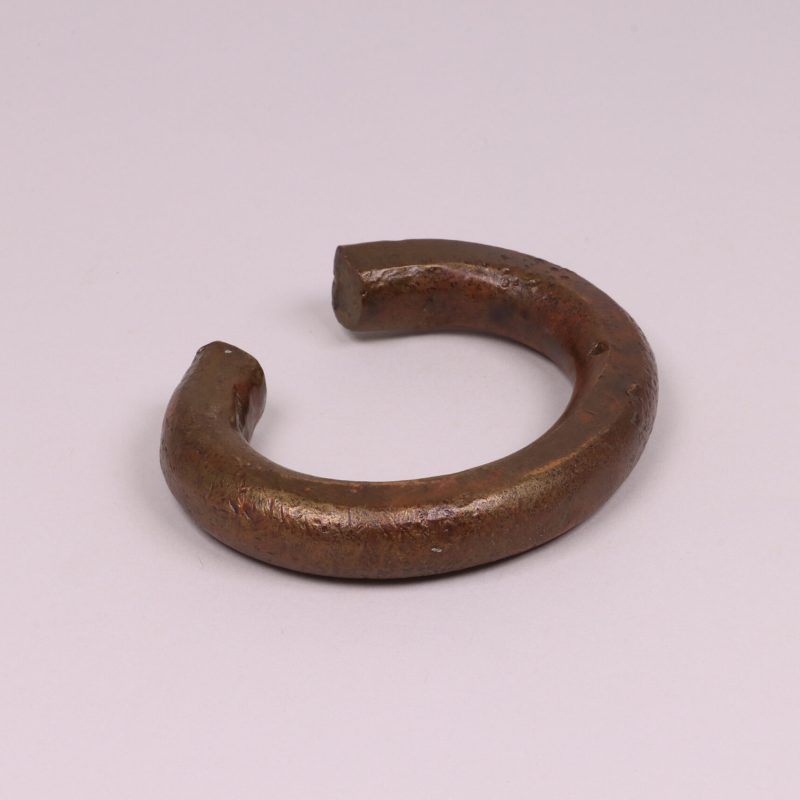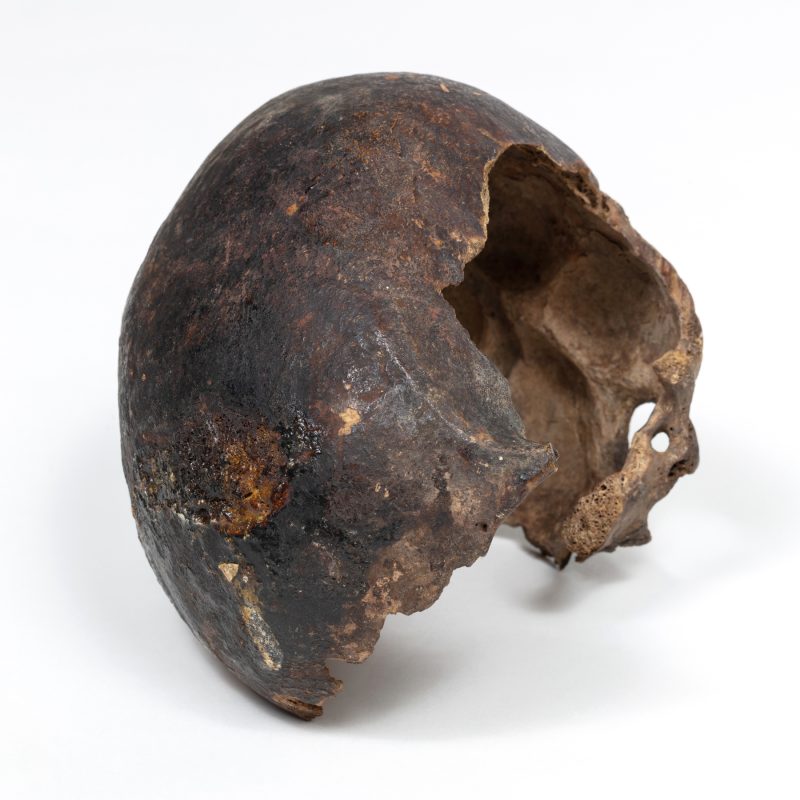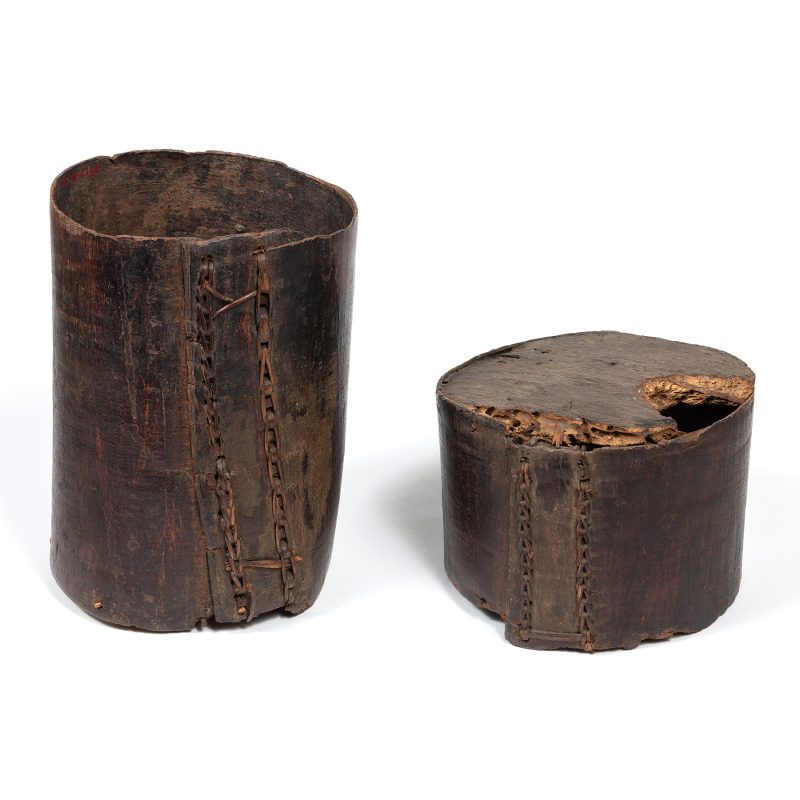Summary of results
This is a three-faced mask of Ngoan Ntangan [also known as Ngón-Ntángán], which in the Fang language means ‘white maiden’ or ‘in the time of the whites.’ This mask is used for the dance of the same name and is part of the collection of objects associated with the expedition carried out by the Institute of African Studies of the Spanish National Research Council (CSIC) to former Spanish Guinea during May and June 1948. Specifically, it is one of the pieces collected by Joaquim Mateu Sanpere, an entomologist from the expedition’s Zoology section, who remained in Guinea for a few months after the expedition ended. During that period, Mateu gathered dozens of ethnological objects, which are now distributed between the MuEC and the National Museum of Anthropology in Madrid.
There is no record of this mask ever being exhibited. Its three white faces symbolise the three countries into which the Fang people were fragmented as a result of colonial rule: Equatorial Guinea, Cameroon, and Gabon. Today, these masks hold great symbolic value in Equatorial Guinea and are associated with the anti-colonial movement. A similar piece is currently on display at the National Park Gallery in Malabo, where it is presented with an interpretation focusing on the connection between this dance and the mid-20th-century independence movement.
Chronological reconstruction of provenance
Regarding the mask’s arrival at the museum, the current inventory records it as part of a deposit of 272 pieces made by Joaquim Mateu Sanpere in January 1949. We do not know exactly when the mask was made, so the only certainty is that it predates 1948. Even so, it seems that the dance associated with the mask is older and is linked to the Fang people’s relationship with white European traders (Okenve 2006: 89). Originally, this dance was performed with a single-sided mask. According to various sources, the three faces of the mask could symbolise the three countries into which the Fang people were divided by the colonial occupation of their territories (e.g. Okenve 2006; Aranzadi 2006). We could therefore infer that the mask could not have existed before the final delineation of the borders between Cameroon, Gabon, and Equatorial Guinea.
The exact provenance of the piece remains unknown, as the original inventory in which Joaquim Mateu would have recorded its exact place of acquisition has not yet been located. We know that such information must have existed, as a letter from August Panyella requesting the list from Joaquim Mateu has been found (Panyella-Amil Archive). Additionally, another list exists containing information about the set of pieces collected by Mateu on the same journey, which in 1958 were sent to Madrid to become part of the Museo de África. From this list, it can be deduced that Mateu was responsible for visiting the northern coast of the Continental Region of Equatorial Guinea (formerly Rio Muni), made a stop in the town of Ayamiken, and visited the southern part of the country, collecting pieces from the area considered Fang Okak—for example, villages along the road from Evinayong to Nsork via Akurenam, or from Evinayong to Akonibe and Engong. The mask, therefore, could originate from this southern and inland area of Rio Muni (now the Continental Region, specifically Centro Sur Province and part of Wele-Nzas) (MNA – Folder 8. Museum of Africa File. Directorate-General of African Territories and Provinces).
Estimation of provenance
The mask was acquired in the Continental Region of present-day Equatorial Guinea. Based on the available information, and considering that it is part of the collection gathered by Joaquim Mateu, we can infer that it was likely acquired in the area associated with the Fang-Okak linguistic group, and therefore in the south of the country, near the border with present-day Gabon.
Possible alternative classifications
It is recommended to indicate the possible origin of the mask in the southern area of the Continental Region of Equatorial Guinea and to include its Fang name, Ngoan Ntangan [also Ngón-Ntángán], as well as the name of the dance in which it is used. The usual Fang translation for the mask is ‘white maiden’ (Aranzadi 2006:59), however, it can also be translated as ‘in the time of the whites’. The term Ngón or Ngoan means ‘moon’ or ‘lunar month’ and therefore refers to a temporal unit. This is why the same term is applied to adolescent women, as it is associated with menstruation (Okenve 2007: 89).
It is also advisable to mention that this piece belongs to the collection gathered by Joaquim Mateu, a member of the 1948 IDEA expedition, who extended his journey for a few more months (until November) and visited the Okak villages in the south of the country.
Complementary sources
Archives:
Arxiu del Museu Etnològic i de les Cultures del Món – MEB 128-01: Expedient de l’expedició a Guinea realitzada l’any 1948. 478 ítems, 14 carpetes.
Arxiu del Museo Nacional de Antropologia – Expediente del Museo de África. Dirección General de Plazas y Provincias Africanas. Carpetes 2 a 9.
Arxiu Panyella-Amil
Bibliography:
Alcobé Noguer, S. (1949). Una expedición científica a los territorios españoles del Golfo de Guinea. Archivos del IDEA, III, 10, 25-33.
Alcobé Noguer, S. (1955). Informe de la labor realizada por la expedición científica a los Territorios españoles del Golfo de Guinea, organizada por la Dirección General de Marruecos y Colonias. Archivos del IDEA, VIII, 32, pp. 85-95.
Aranzadi, I. (2006). Instrumentos musicales de las etnias de Guinea Ecuatorial. Madrid: Apadena.
Aranzadi, J. (2021). Estereotipos étnicos de los indígenas en los primeros estudios coloniales sobre la Guinea Española (1900-1936). Dins Bérose: Encyclopédie internationale des histoires de l’anthropologie. París: Bérose. <https://www.berose.fr/article2347.html?lang=f>.
Calvo i Calvo, L. (2021). Sociedad, política y ciencia en la museografía española del siglo XX: El Museo Etnológico de Barcelona como estudio de caso. Aula, Museos y Colecciones, (8), 13-25.
Calvo Calvo, L. (2023). Anthropology and image in colonial contexts: The scientific expedition to Spanish territories in the Gulf of Guinea (1948). Culture & History Digital Journal, 12(1). <https://doi.org/10.3989/chdj.2023.002>.
Okenve, E. (2007). Equatorial Guinea 1927-1979: A new African tradition. PhD thesis. SOAS University of London. DOI: <https://doi.org/10.25501/SOAS.00029238>.
Nerín, G. (2008). Un guardia civil en la selva. Barcelona: Ariel.
Pérez Armiño, L. (2020). El Museo de África: historia en blanco y negro. F. J. Arnaldo Alcubilla, A. Herrero Delavenay, & M. Di Paola (Coords.), Historia de los museos, historia de la museología: España, Portugal, América (pp. 355-360). Ediciones Cátedra. ISBN 978-84-18105-34-0
Pérez Armiño, L. (2024) Pero, ¿hubo alguna vez Museos Coloniales? Suárez Navaz, L., Ferrándiz, F., Pérez Armiño, L., Valenciano-Mañé, A., & Gimeno Martín, J. C. (2024). El retorno de la hispanidad: visions críticas desde la antropologia. Disparidades. Revista De Antropología, 79(1), 1050. <https://doi.org/10.3989/dra.2024.1050>.
Veciana Vilaldach, A. (1956). Contribución al estudio antropológico del negro africano: los bujeba (bisió) de la Guinea Española. Madrid: CSIC-IDEA.

